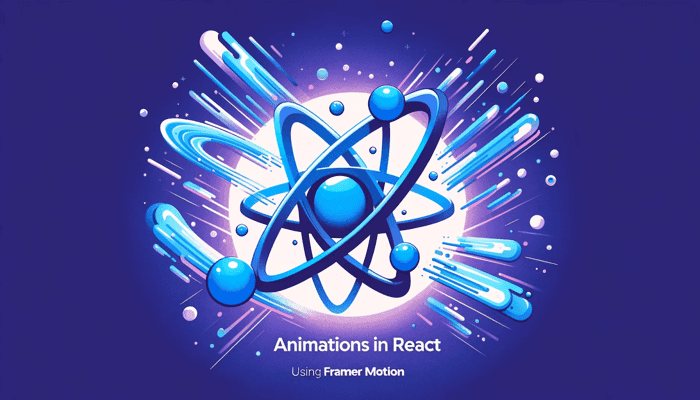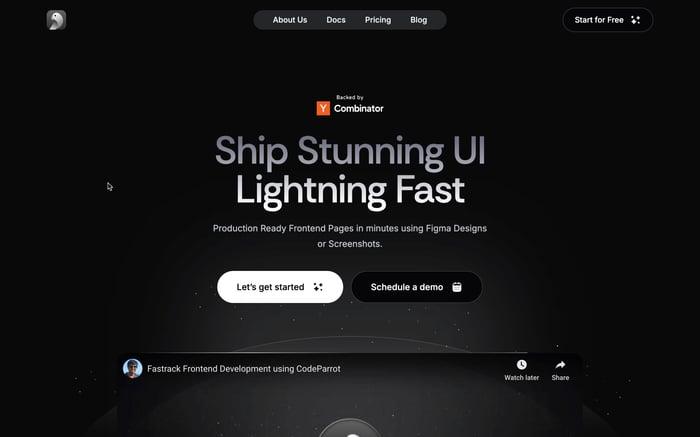

Framer Motion: Animate React Easily
An important part of improving your application's user experience is animation. Creating sophisticated and fluid animations in the React ecosystem has frequently proven to be difficult, requiring developers to go through a multitude of tools or battle with CSS animations. This is where Framer Motion comes in. Framer Motion is a powerful tool that simplifies the creation of complex animations, making it easier for developers to achieve smooth and professional results without extensive effort.
Framer Motion is a robust and adaptable toolkit created exclusively for React that streamlines the animation creation process. It provides a comprehensive set of tools and features that simplify the implementation of animations, making it accessible even for developers with limited animation experience. In this blog, we'll dive deep into what Framer Motion has to offer. Let's explore how it might offer that extra spark needed to make your React applications stand out, elevate the user experience, and truly make them shine.
What is Framer Motion?
Framer motion is simple React library to add seamless and beautiful animations to projects. It has extensive animation features that are both strong and easily accessible.
Getting started with Framer motion in React
To get started, we'll require a React application with the framer libraries installed. To install framer-motion in your react app, run
npm install framer-motionor if you're using yarn, run
yarn add framer-motionFramer's motion component
At the heart of Framer Motion is the motion component, a powerful and flexible tool that transforms standard React components or HTML elements into animated wonders. There's a motion component for every HTML and SVG element, for instance motion.div, motion.circle etc. When you use a motion component, you're not just working with a static element anymore. Instead, you gain access to a suite of properties that control animations, gestures, and more.
Creating a React Component and using the motion component, importing it from "framer-motion"
import React from 'react';
import { motion } from 'framer-motion';
function MyAnimatedComponent() {
return (
<motion.div animate={{ scale: 1.2 }} transition={{ duration: 0.5 }}>
Hello, animations!
</motion.div>
);
}
export default MyAnimatedComponent;animate: The animate property allows us to do various transformation animations on the provided objects, such as translating on the X and Y axes, rotating, scaling, and changing the degree of opacity.
Leveraging AnimatePresence for Exit Animations
Though handling animations for when components depart might be a little more difficult, Framer Motion's motion component offers an amazingly versatile approach to animate parts as they enter or while they're present on the screen. This is where the component called AnimatePresence comes in quite handy. It enables you to add exit animations to components in your React apps, resulting in a smooth and visually beautiful transition between the entering, updating, and quitting of your components.
AnimatePresence is a component that enables us to animate components when they're removed from the React tree. It's especially useful for conditional rendering or when components enter and leave the DOM based on user interactions, such as toggling visibility or navigating between routes.
To use AnimatePresence, wrap it around the components you wish to animate on exit. The only requirement is that these components accept an exit prop to define the animation that occurs when they're removed from the component tree.
Here is a sample example for the same:
import { motion, AnimatePresence } from "framer-motion"
export const MyComponent = ({ isVisible }) => (
<AnimatePresence>
{isVisible && (
<motion.div
initial={{ opacity: 0 }}
animate={{ opacity: 1 }}
exit={{ opacity: 0 }}
/>
)}
</AnimatePresence>
)In this example, a component is conditionally rendered based on the isVisible prop. When isVisible is false, the component exits, and AnimatePresence triggers the exit animation specified in the exit prop of the motion.div.
initial: Using this property, we may set the initial location of an animated object. This might be its scale, rotation, and location on the y and x axes.
Transitions
A transition defines the type of animation used when animating between two values.It gives you control over the personality of each motion and gives your animations a smooth, snappy, or bouncy feel. You can use this prop to offer a uniform appearance and feel to all of your animations by applying it to both the animate and exit properties.
Types of Transitions
Framer Motion supports several types of transitions, each offering a unique effect:
- Tween: The default type, useful for simple, straightforward animations. It interpolates values over time, providing a smooth transition from start to end.
- Spring: Adds a natural, physics-based motion to your animations, making them feel more dynamic. Spring transitions are great for interactions and gestures, giving a responsive feedback loop to user inputs.
- Inertia: Mimics a free-falling object coming to a rest, ideal for deceleration animations. It's particularly effective for swipe or momentum-based interactions.
A Sample Example of using the spring transition:
<motion.div
animate={{ x: 100 }}
transition={{ type: "spring", stiffness: 100 }}
/>Gesture-Based Interactions
Framer Motion also supports gesture-based interactions such as dragging, hovering, tapping, and more. These interactions can make the application feel more alive and responsive to user inputs.
Draggable Elements:
To make an element draggable, simply add the drag prop to a motion component. You can constrain the drag to a specific axis or define boundaries.
<motion.div drag="x" dragConstraints={{ left: -100, right: 100 }}>
Drag me!
</motion.div>Hover and Tap Effects:
Animating elements on hover or tap is straightforward with Framer Motion. Use the whileHover and whileTap props to define animations for these interactions.
<motion.button whileHover={{ scale: 1.1 }} whileTap={{ scale: 0.9 }}>
Press Me
</motion.button>Exploring Further with Framer Motion
We have only begun to explore the full potential of Framer Motion in React applications. Framer Motion offers a wide range of features to turn your apps into something more than just functional—from straightforward fades and scales to intricate motions and animations that respond to user interaction. You can go through the official Framer Motion documentation for guides, examples, and detailed descriptions of the various components and features they provide. Happy coding 🚀.
Related articles

Development using CodeParrot AI




